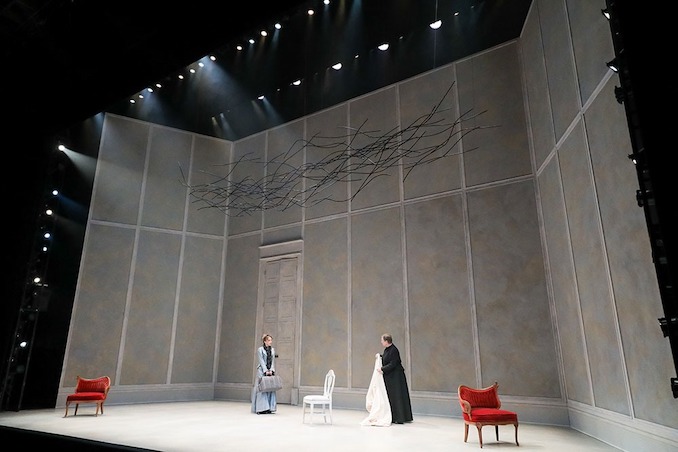In the final scene of Ibsen’s 1879 groundbreaking masterwork, A Doll’s House, Nora makes the shocking decision to leave her husband and children, and begin a new life on her own. This climactic event—when Nora abandons everything in her life; “the door slam heard round the world” as it’s come to be known — instantly propelled world drama into the modern age. It also began the discussion in earnest of women’s rights in Western society.
Now 15 years has passed since Nora’s shocking exit and she returns with a knock at the same door? Why did she return? In Lucas Hnath’s A Doll’s House Part 2 we are curious to how it all picks up and what has changed not only in her family but in society. The play is now in Toronto as part of the Off-Mirvish season at the CAA Theatre until April 14, 2019.

Well-loved Canadian actor Deborah Hay stars as Nora in this production. We had a chance to chat with her to find out more…
The first Doll’s House was groundbreaking as the play was considered outrageous at that time especially for a woman to leave her family. What maybe surprising to the audience is that it was a man who had written the story. And now the sequel is also written by a man. What are your thoughts on this?
DH: Thank God Ibsen wrote A Doll’s House. Back in 1879 Norway, there weren’t opportunities for women to give voice to the ideas that Ibsen put on the stage in that incredible play. Ideas that call into question not just the roles and limitations that society imposes on women, but the autonomic thinking and behaviour that keeps all of us from knowing who we really are… And when i read Lucas Hnath’s Doll’s House Part 2, i thought “how cheeky and brilliant”. He honours Ibsen’s original so beautifully. The play gives equal voice to four very different points of view in a balanced, funny and moving way. I’m all for it.
Nora takes on so many issues when she returns –what are the most interesting for you?
DH: Nora takes on a lot of issues but they all kind of boil down to one key thing; that the way her world in 1894 Norway is set up (and the play definitely asks an audience to ponder over just how much things have changed since then) makes honesty and freedom really hard for people who are trying to love each other. And she’s hugely driven by the insistence that we are humans first, and gendered second, and that as long as the world keeps insisting that different rules apply to us based on gender, we are all screwed.
Your character, Nora, is really starting from scratch despite this being a sequel. But what has changed in her?
DH: She starts from scratch when she walks out the door, and then devotes fifteen years to learning who she is. Learning how and what she thinks. Not the thinking she inherited but the growing of her own mind from scratch. And when we meet her we meet someone who loves reaching for and tossing around ideas, loves debating, loves being right. And she has a really hard time coming home and facing what is behind the door that she closed in order to find herself.

There’s no real one side to the story — each character has its own importance and place in this play. Do you have any idea why the playwright chose this path?
DH: Being a good playwright -and in true Ibsen style – Hnath lets the people in the audience make up their own minds about who’s right and who’s wrong. And I think he makes it a really hard call.
Are people surprised how contemporary the language is despite the period costumes?
DH: I think they’re surprised and delighted. It’s a nice bridge between then and now. The language serves to make the piece immediate for a modern audience. Also, it’s kind of funny to hear 19th century Norwegians telling each other to eff off.
It seems like something for classical theatre lovers but it’s proven to be popular for a bigger audience?
DH: It’s fun for the audience members who are familiar with Ibsen’s Doll’s House, but it also resonates for people who come to the play completely new to the Helmer household. The emergence of this play is obviously very timely, with advances in levelling the playing field headlining news world-wide. There has never been a better time to tell this story, and to re-imagine Nora’s plight: How can she strive to better her own position– and the world’s– operating in a system that doesn’t treat her as an equal to a man? This play handles that question with humour and guts and a great amount of love.
A DOLL’S HOUSE, PART 2 premiered in Costa Mesa, California, in 2016. It had its Broadway debut in 2017, winning unanimous praise from critics and audiences, and nominated for seven Tony Awards.
“A smart, funny and utterly engrossing play,” said The New York Times. “It delivers explosive laughs while also posing thoughtful questions about marriage, inequality and human rights,” added The Hollywood Reporter. The Los Angeles Times named it “the best play of the year,” and Time Out said, “It’s dynamite. It keeps you hanging on each turn of argument and twist of knife.”




